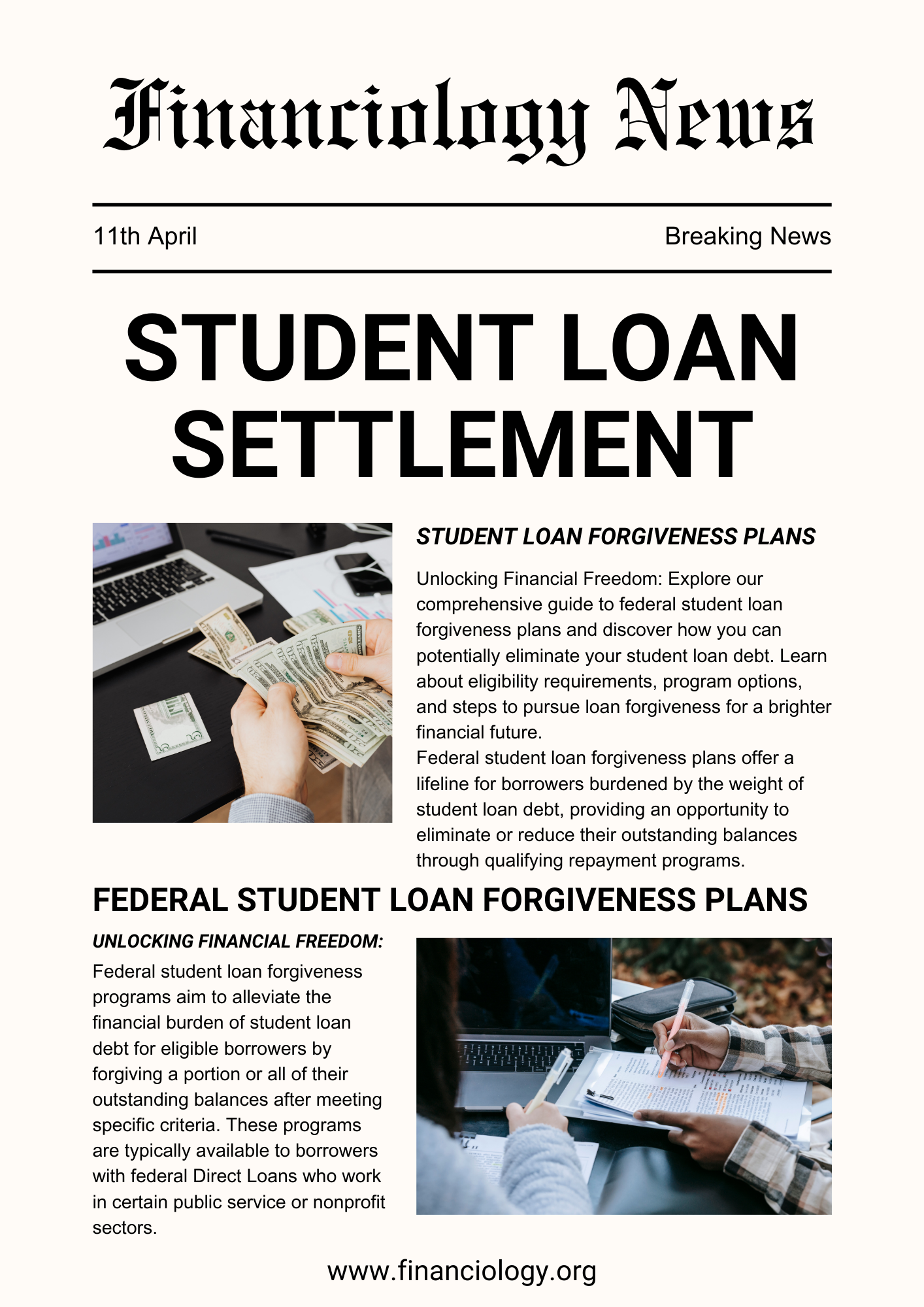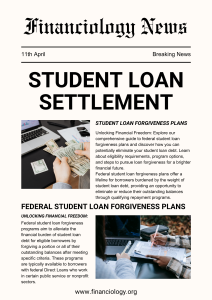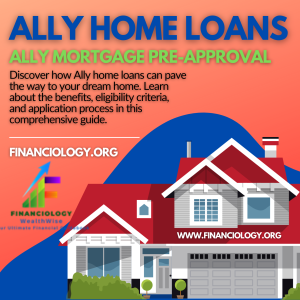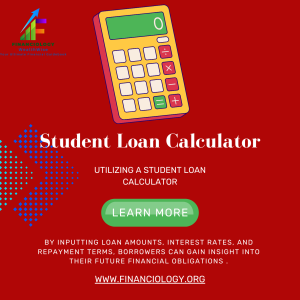Discover Student Loan Settlement Tips
7 min read
Navigating Student Loan Settlement
Tips for Financial Relief: Explore our comprehensive guide to navigating student loan settlement and discover strategies for managing debt effectively. Learn about the settlement process, negotiation tips, and alternatives to consider for financial relief.
For individuals burdened by overwhelming student loan debt, exploring student loan settlement options can provide a pathway to financial relief and debt management. By understanding the settlement process, negotiating effectively, and exploring alternative solutions, borrowers can take proactive steps toward achieving financial stability.
In this guide, we’ll delve into the world of student loan settlement, offering valuable tips and insights to help borrowers navigate this complex terrain with confidence.
Understanding Student Loan Settlement
Student loan settlement involves negotiating with lenders or loan servicers to reach an agreement on a reduced payoff amount for your outstanding debt.
While not as common as settlement options for other types of debt, such as credit card or medical debt, student loan settlement may be available in certain circumstances, particularly for borrowers facing financial hardship or insurmountable debt burdens.
However, it’s essential to recognize that student loan settlement is typically more challenging to achieve due to the unique characteristics of student loans, such as federal protections and restrictions.
Negotiation Tips for Student Loan Settlement

When exploring student loan settlement options, consider the following tips to maximize your chances of success:
- Assess Your Financial Situation: Before initiating negotiations, assess your financial circumstances, including your income, expenses, assets, and liabilities. Understanding your financial position will help you determine the feasibility of settling your student loans and guide your negotiation strategy.
- Gather Documentation: Compile documentation supporting your financial hardship, such as pay stubs, tax returns, bank statements, and any relevant medical or employment records. Providing evidence of your financial struggles can strengthen your case during negotiations.
- Open Communication: Establish open and transparent communication with your lender or loan servicer. Clearly explain your financial challenges and express your willingness to work towards a mutually beneficial solution. Maintaining a respectful and cooperative demeanor can facilitate productive negotiations.
- Seek Professional Assistance: Consider seeking assistance from a reputable financial advisor, attorney, or debt settlement company with experience in student loan negotiations. These professionals can provide valuable insights, advocacy, and representation to help you navigate the settlement process effectively.
- Be Patient and Persistent: Negotiating a student loan settlement can be a lengthy and challenging process. Be prepared to exercise patience and persistence as you work towards a resolution. Stay committed to your financial goals and continue advocating for a fair and reasonable settlement offer.
Alternatives to Student Loan Settlement
While student loan settlement may offer relief for some borrowers, it’s essential to explore alternative options before pursuing this route. Consider the following alternatives:
- Income-Driven Repayment Plans: Federal student loans offer income-driven repayment plans that adjust your monthly payments based on your income and family size. These plans can provide more manageable payments while potentially qualifying you for loan forgiveness after a certain period of repayment.
- Loan Consolidation or Refinancing: Consolidating or refinancing your student loans can simplify repayment by combining multiple loans into a single loan with a new interest rate and repayment term. This can lower your monthly payments and potentially reduce your overall interest costs.
- Deferment or Forbearance: If you’re experiencing temporary financial hardship, consider applying for deferment or forbearance, which allows you to temporarily pause or reduce your student loan payments. While interest may continue to accrue during these periods, they can provide temporary relief while you regain financial stability.
Navigating student loan settlements requires careful consideration, strategic planning, and effective negotiation skills.
By understanding the settlement process, implementing negotiation tips, and exploring alternative solutions, borrowers can take proactive steps toward managing their student loan debt and achieving financial relief.
Remember to assess your financial situation, communicate openly with your lender, and seek professional guidance as needed. With perseverance and determination, you can pave the way towards a brighter financial future.
A Guide to Federal Student Loan Forgiveness Plans
Unlocking Financial Freedom: Explore our comprehensive guide to federal student loan forgiveness plans and discover how you can potentially eliminate your student loan debt. Learn about eligibility requirements, program options, and steps to pursue loan forgiveness for a brighter financial future.
Federal student loan forgiveness plans offer a lifeline for borrowers burdened by the weight of student loan debt, providing an opportunity to eliminate or reduce their outstanding balances through qualifying repayment programs.
By understanding the intricacies of federal loan forgiveness options, borrowers can take proactive steps towards achieving financial freedom and reclaiming control over their financial futures.
In this guide, we’ll delve into the world of federal student loan forgiveness, offering valuable insights and guidance to help borrowers navigate this complex landscape with confidence.
Understanding Federal Student Loan Forgiveness
Federal student loan forgiveness programs aim to alleviate the financial burden of student loan debt for eligible borrowers by forgiving a portion or all of their outstanding balances after meeting specific criteria. These programs are typically available to borrowers with federal Direct Loans who work in certain public service or nonprofit sectors or who participate in income-driven repayment plans.
By fulfilling the requirements of these programs, borrowers may qualify for forgiveness of their remaining loan balances, providing significant relief from the burden of student loan debt.
Program Options for Federal Student Loan Forgiveness
Several federal student loan forgiveness programs cater to diverse borrower needs and career paths. Some of the most prominent programs include:
- Public Service Loan Forgiveness (PSLF): PSLF offers loan forgiveness to borrowers who work full-time for qualifying employers in the public service sector, including government agencies, nonprofits, and certain other organizations. After making 120 qualifying monthly payments while employed in an eligible position, borrowers may apply for forgiveness of their remaining loan balances.
- Teacher Loan Forgiveness: This program is designed to incentivize teachers to work in high-need schools and educational service agencies by offering forgiveness of up to $17,500 in Direct Subsidized and Unsubsidized Loans after five years of qualifying teaching service.
- Income-Driven Repayment Plan Forgiveness: Borrowers enrolled in income-driven repayment plans, such as Income-Based Repayment (IBR), Pay As You Earn (PAYE), or Revised Pay As You Earn (REPAYE), may be eligible for forgiveness of their remaining loan balances after making qualifying payments for 20 or 25 years, depending on the specific plan.
Eligibility Requirements and Steps to Pursue Forgiveness
To qualify for federal student loan forgiveness, borrowers must meet certain eligibility criteria and fulfill program requirements. While the specifics vary depending on the program, common requirements may include:
- Employment in a qualifying public service or nonprofit position.
- Enrollment in an eligible repayment plan.
- Making a specified number of qualifying payments.
- Meeting additional program-specific criteria, such as teaching in a designated subject area or geographic location.
To pursue federal student loan forgiveness, borrowers should
- Research eligibility requirements for available forgiveness programs.
- Review their loan repayment options and select the most advantageous repayment plan based on their financial circumstances.
- Submit required documentation and certifications to verify employment and repayment progress.
- Maintain accurate records of payments and employment to ensure eligibility for forgiveness.
Federal student loan forgiveness programs offer a valuable opportunity for borrowers to alleviate the financial burden of student loan debt and pursue a brighter financial future.
By understanding the options available, meeting eligibility requirements, and taking proactive steps to pursue forgiveness, borrowers can potentially eliminate or reduce their student loan balances and achieve greater financial stability.
Remember to research program details, consult with loan servicers or financial aid professionals, and stay informed about updates and changes to forgiveness programs. With dedication and perseverance, federal student loan forgiveness can pave the way toward financial freedom and peace of mind.
How to Apply for Earnest Loan Forgiveness?

Earnest, a private student loan lender, does not offer a specific loan forgiveness program like federal loan forgiveness programs such as Public Service Loan Forgiveness (PSLF).
However, Earnest does offer flexible repayment options and benefits that can help borrowers manage their student loan debt more effectively.
Here’s how you can navigate Earnest loan repayment and explore potential options for managing your debt:
- Understand Earnest Loan Terms: Start by reviewing the terms of your Earnest student loan. Understand the interest rate, repayment term, and any other conditions associated with your loan. Knowing these details will help you make informed decisions about repayment.
- Explore Earnest Repayment Options: Earnest offers a variety of repayment options to accommodate different financial situations. These options may include fixed or variable interest rates, as well as various term lengths for repayment. Review the repayment plans available to you and choose the one that best fits your budget and financial goals.
- Consider Earnest Refinancing: Earnest also offers student loan refinancing, which allows borrowers to consolidate existing student loans into a single loan with a new interest rate and repayment term. Refinancing can potentially lower your interest rate and monthly payments, making it easier to manage your debt. However, refinancing may not be the best option for everyone, so carefully consider the pros and cons before proceeding.
- Communicate with Earnest: If you’re experiencing financial hardship or difficulty making your loan payments, don’t hesitate to reach out to Earnest for assistance. They may be able to offer temporary forbearance or modify your repayment plan to better suit your needs. Open communication with your lender is key to finding solutions that work for you.
- Explore Earnest Loan Forgiveness Alternatives: While Earnest does not offer a specific loan forgiveness program, you may still be eligible for loan forgiveness through other means. For example, if you work in a qualifying public service or nonprofit job, you may be eligible for federal loan forgiveness programs like PSLF. Additionally, some states offer loan forgiveness programs for specific professions or areas of employment. Research these options to see if you qualify.
Overall, applying for “Earnest loan forgiveness” involves understanding your loan terms, exploring repayment options, communicating with Earnest about your financial situation, and considering alternative forgiveness programs if applicable. By taking proactive steps and staying informed, you can effectively manage your student loan debt and work towards financial freedom.
Helpful official website links:
Earnest Student Loan Forgiveness: Click here
federal student loan forgiveness: Click here






